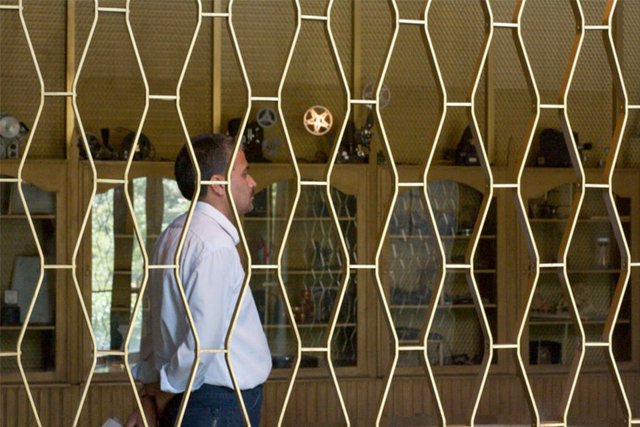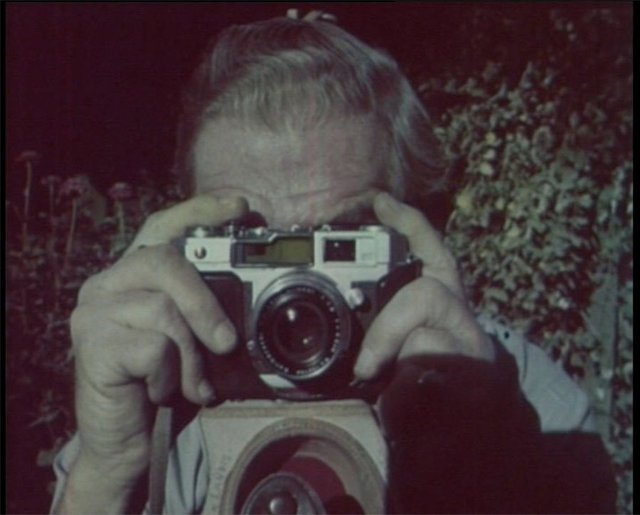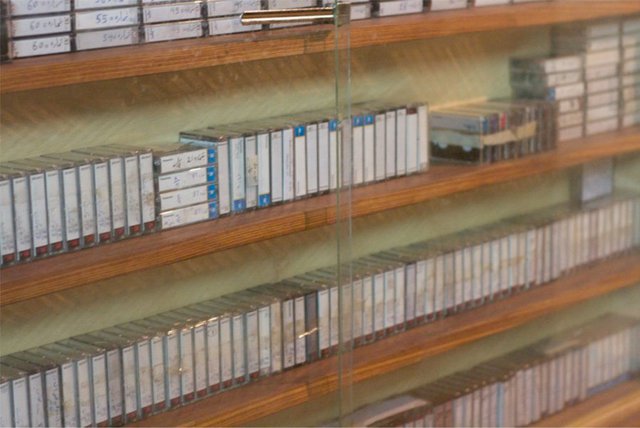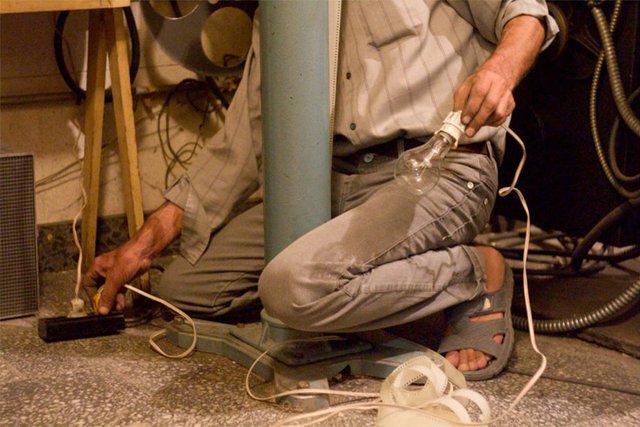Essays
Field notes for 'What We Left Unfinished'
Dispatch One: the Artist and the Archive, June–September 2013
'Perhaps, like the Library of Alexandria, any archive is founded on disaster (or its threat), pledged against a ruin that it cannot forestall.'
– Hal Foster[1]
I.
It is not simple to work with an archive in a country like Afghanistan, where books, films and monuments are all subject to burning; stupas are looted and statues shattered; and sites sacred for one reason or another are eroded by both natural and human disasters. Understandably, Afghans are wary of anyone who proposes to 'mine' any cultural resource they still possess.
If you want to work with an Afghan archive, therefore, you cannot address your desires to it directly. You must sidle up to it sideways, as if approaching a horse with an uncertain temper. You must turn up your palms and turn out your pockets to demonstrate the purity of your motives. You must persuade it to yield its secrets, slowly and obliquely. Above all, you must try to understand what the archive desires of you. You cannot hope to extract anything from the archive without giving something back.
II.
Archives are not static. Their material reality changes over time – decayed, displaced, reorganized – and their meanings shift as well, depending on the moment and context in which we encounter them.
One of the peculiarities of the archive, however, is that it often contains either full copies, partial records, or fragmentary traces of its previous iterations – the past selves it shed on the way to becoming the present archive. In the case of the Afghan Films archive, these records and traces take on several forms: the scraps of burned film-prints still visible in the courtyard, remnants of the Taliban-era bonfire; the stray frames of film, both negative and positive, found in bins and on floors where damaged splices and leader are being repaired; the handwritten records and labels on the old metal film canisters, gradually being replaced by new plastic canisters with new handwritten labels as films are systematically cleaned, numbered, watched, described and catalogued.
This indexing of the archive is critical, because your first approach to any archive is always through its metadata: not the content, but its descriptors. When you are engaged in a slantwise, shuffling sort of appeal to the archive – three steps forward, two steps back – your approach may be even more removed. First you must address the people who possess or are creating the descriptions, and then you must sort through their often conflicting and overlapping accounts. In short, you must perform some of the functions of the archive, or archivist, yourself. This performance, you hope, can be your contribution to the archive: a history of sorts, which you write as you find it and leave behind when you go.
III.
Archives are more than the sum of their materials. Each archive has its archivists and administrators, janitors and historians, redactors and readers, and others who at various times perform the archive for its public. Each performance refracts the archive through the performer's interpretation, and each is then reflected in the archive, as the interpretation becomes another record, or another path through the records that can be retraced. Some performances alter the archive irrevocably, slashing and burning as they go, like the literal burning of film prints in the Afghan Films courtyard in 1996. Others are delicate insinuations, or daily rituals, whose effects are not visible until viewed from a distance – leaving out certain details while labelling a film canister, for example, because everyone knows those details, until no one is left who knows and the data transmutes from omitted to lost. Or the use of a cheap brand of tape to splice film in lean years, which decades later means that each time those reels run through a projector or telecine apparatus, they may break at the splice point. Or a particular method of cleaning prints with rags, which over the years accumulates as a fretwork of scratches on celluloid.
Your performance, of course, is an interpretation as well as an appeal: a synthesis of these other performances, perhaps even more destructive, perhaps less.
IV.
Some parts of the archive are always more visible than others. The archive has two faces: its public narrative and its private holdings. The public narrative, which is designed to be visible, is usually constructed from only a small portion of the private holdings, which remain largely invisible. The public narrative can be adapted by the archive's performers to meet the moment, by sampling from different parts of the private holdings to construct the order most likely to match present interests. In every archive, there exists a literal or metaphorical dusty drawer where past archivists have filed the private holdings deemed least likely to ever be of interest to anyone anywhere: unfinished projects, failed experiments, institutional embarrassments. If you are an artist, you probably want to find that drawer and rifle through it.
The Afghan Films archive is, however, a special case, where the entire negative archive and large portions of the print archive were hidden from 1996-2002, with the door to the negative archive completely bricked up and disguised behind a poster of Mullah Omar. In some ways, the whole archive was temporarily filed in the invisible dusty drawer, and only very gradually did it emerge from this position of retreat over the subsequent decade (2002-12).
The systematic re-cataloguing of the Afghan Films archive, then, has both ritual and practical functions. Ritually, it brings every reel of film in the archive out of the drawer and into the light, examining and re-evaluating each film or fragment relative to the present moment. Practically, many of the prints are literally covered in dust, and need cleaning and checking to see whether they are still viable. The negatives, in their closed chamber, remained more pristine, but are plagued by the aforementioned splices, which need to be marked before any kind of large-scale telecine project can be undertaken. Multiple handwritten catalogues of prints and negatives exist but they are often contradictory or overlapping, and the handwritten labels on the film canisters also sometimes contradict the catalogues, or are inaccurate. This surplus of unreliable indices has produced some uncertainty about which films now (post-bonfire) may exist only as negatives, which may exist only as prints, and which may exist as both negatives and prints. Re-cataloguing will resolve this uncertainty. It also serves to discover which prints may still be useful for soundtrack digitization or circulation of films on film.
The re-cataloguing process inevitably begins to reveal some of the archive's private holdings, which have never been part of its public narrative. At Afghan Films, these can be broken down into several groups:
1) Foreign films co-produced by Afghan Films, copies of which were deposited with the archive;
2) Student films supported by Afghan Films, including some by directors who later became well-known;
3) Prints of commercials, animations and industrial films which were distributed by Afghan Films to theatres, but not produced by Afghan Films;
4) Unedited rushes shot, but not used, for the Afghan Films weekly newsreels;
5) Rushes and scenes from unfinished feature films produced by Afghan Films.
The latter two categories, the unedited newsreel and unfinished feature footage, correspond closely to periods of political turbulence in Afghanistan, notably 1977-79 and 1989-96. 1977-79 includes the end of Daoud's republic, the Afghan Communist coup, the Communist party split, the assassination of Taraki by Amin, and the Soviet invasion. 1989-96 includes the withdrawal of Soviet support from the Afghan government, Najibullah's attempt to reconcile with the mujahidin, the handover of power to the mujahidin coalition government, the split within that government and subsequent civil war, and the Taliban's entry into Kabul. While some short and feature films and a number of newsreels were finished and circulated during both of these periods, a parallel body of material remained unfinished, as the rapid changes of government resulted in projects being cancelled and new projects commissioned in their place; images that read as innocuous one day could become seditious the next.
As the national film institute, Afghan Films was responsible for projecting the image of the state to its citizens – sometimes subtly, sometimes more overtly. In moments of dramatic and often violent re-imaginings of the state by its politicians, Afghan Films was often caught in a conundrum, whereby its images had to communicate not the reality of the state as it was, but the imaginary of the state as it desired itself to be – the future-possible state, rather than the present state. In its attempt to catch up to this future-possible state, Afghan Films may have had to discard, or put aside, a lot of film that depicted the state as it was and had been, which did not quite match up to the state as desired or imagined.
In the research project What we left unfinished, I will be looking for some of these unfinished films and the people who made them, trying to decipher, from the gaps between what was finished and unfinished, some clue to the gaps between how the Afghan Left imagined its re-invention of the state and how that project went so terribly wrong – the gaps between revolution, reconciliation and dissolution.
V.
Archives often presume or present themselves to be keepers of facts, and, moreover, keepers of facts that serve as anchor points for the larger historical record. Artists prospecting in archives are sometimes suspected by archivists of taking these facts only to weave fictions around them. While this suspicion is not entirely unjustified, it also overlooks the multiple layers of constructed narrative that already surround most archival records – from provenance records, to finding aids, to placement and classification within the archive, to metadata tags, descriptions and annotations. Each of these layers has an individual author and thus allows subjective interpretations, human errors, fictions and inventions to accumulate around, and influence perceptions of, the original records.
At Afghan Films, the question of truth is complicated further still by the 'house style' of mixing fiction and fact within the films produced by the state through Afghan Films in 1967-1996. This tendency encompasses both fiction features, which incorporate documentary footage, and documentary films, which incorporate fictional elements. The first variant appears as early as Manand Waqob (Like the Eagle), the 1967 feature that wraps a fictional story of a young girl's journey around actual footage of the 1966 Independence Day celebrations, and as late as Ouruj (Ascension), the 1993 feature about mujahidin that features actual fighters from Masoud's group as extras, complete with their real weapons. The second variant pops up sporadically in earlier years – as in the tourism-promotion film Afghanistan: Land of Hospitality and Beauty (produced by the Ministry of Culture in the early 1960s, before the official launch of Afghan Films, but included in the archive), where anthropologists Louis and Nancy Hatch Dupree play the 'tourists' traveling around Afghanistan, snapping pictures. The tendency becomes pronounced, however, during the Parcham years (1979-89), when Soviet-style propaganda films were produced in place of, or supplemented, the weekly newsreels distributed to cinemas. In order to disentangle fact from fiction within the original records, and particularly to decode whether the original audience would have perceived a given film as fact, fiction, or both, you must first understand the historical context of that film and the overlapping – but not necessarily identical – cultures of the producing institution, the commissioning government and the viewing audience.
VI.
What are the ethics of the archive?
An archive cannot be separated from its interpreters and past interpretations. They impose their orders upon the archive, and those orders bend the archive toward construction or destruction, preservation or projection, the vault or the network, or sometimes, paradoxically, all these things at once. We cannot evaluate the materials in the archive along some sort of moral axis unless we take into account the structures through which we receive them, which have been produced by the archive's performers and performances.
Is it possible, however, to imagine some kind of ethics of archival research?
The media archive collective Pad.ma suggested in Ten theses on the archive that we approach the archive with intellectual propriety, rather than rigid notions of intellectual property.[2] I interpret this to mean that, as researchers, we should be sensitive to the origins and contexts of archival material, especially when considering how to deploy it within a new artwork. 'Fair use' is a legal doctrine but also an apt phrase: is your use of an existing work fair to the original creator?
In the case of the unfinished films in the Afghan Films archive, the copyright resides with the archive, which therefore controls the intellectual property. Permission to use the footage can be granted by the archive, and licensing fees are paid to the archive. Intellectual propriety, however, would require that the original creators be sought out and consulted about their original intentions for the films, not only as a matter of intellectual curiosity, but also as an ethical prerequisite for taking their unfinished work and re-contextualizing it within a new artwork – especially when the work being appropriated was never made public in its original form. Ultimately, intellectual propriety might even require that the new artwork become a work of facilitation rather than a work of appropriation – that is, after consulting the original creators, it may appear more appropriate or desirable to create a system whereby they can finish their own unfinished work (with the interest coming from the gap between the moment of making and the moment of finishing), rather than subsuming their unfinished work into a new artwork.
VII.
A film archive is a cabinet of memento mori, full of flickering images of things and people long lost. When the film is projected, that which was lost lives again, for a frame or a second, a minute or an hour. The film is projected, not only onto the screen, but also from the deep storage of the archive into the more accessible (if more frangible) memory of a present-day viewing audience. But every time the film is run, the filmstrip risks destruction: the reel may burn or break, the celluloid acquires scratches and spots.
When a film is digitized, it is translated from frames to fields, light to bytes, intermittent to continuous. It loses its specific materiality, but gains the ability to be transmitted to larger audiences. Effectively, it can migrate from the archive-as-vault to the archive-as-network. It can be re-contextualized, re-used, re-mixed. The physical archive may be dispersed, or even destroyed, while the digital archive lives on, copies of copies proliferating across time and space.
In a country like Afghanistan, where iconoclasm is a very real and seemingly perpetual threat, preservation of cultural resources like the Afghan Films archive may best be achieved not by panicked moves to protect assets, but rather by a move to project those assets. That is, locking the films away for another decade in another dusty drawer would be less effective than digitizing the archive as quickly as possible and disseminating films as widely as possible, including placing copies of master files on servers both inside and outside the country. Broad dissemination would also allow a critical discourse to grow around the films, ultimately making an even stronger argument for their preservation.
Perhaps every archive is, like Afghan Films, scrambling to avert its own destruction, whether that arrives through catastrophe, obsolescence, the inevitable decay of materials or the inexorable sway of entropy over order. When a collection becomes an archive, the linguistic shift registers a transformation from a group of objects that are, to a group of objects that were (the same, connected, part of a set, parts of a whole). In this sense, the archive is founded on a moment of passing into the past, a kind of death, and the impulse to archive is connected (as Derrida said, following Freud) to the death drive.[3] The need to archive is connected to the fear of loss; but to archive something, it must be fixed in time, like a butterfly pinned in a glass case, and thus to archive is also to kill the very thing you feared to lose.
At the same time, the archive constantly engages in attempts to resuscitate its holdings, bringing them back to life in the present: translations to new formats; circulation to new audiences; new interpretations, orders, edits, narratives. If the archive is both founded on and pledged against disaster, we can interpret that founding moment as the archive's original attempt to preserve something that might otherwise be lost, and that pledge as the archive's continuing efforts to countermand the static nature of preservation by projecting its past memories into the present and the future.
Walter Benjamin described the task of the historian as seizing hold of the past as it flashes up into the present at 'a moment of danger',[4] and the task of the translator as producing a new text in harmony with the original[5] – that is, more faithful to the original's spirit than its letters, and generated to some extent by the productive tensions between the language of the original and the language of the translation. What, then, is the task of an artist in an archive, as she balances between the roles of archivist, historian, translator and narrator? Perhaps it is to understand which of the archive's preserved pasts relate to the present moment of danger, and find a way to translate and narrate that past into the present, not casually, not haphazardly, and not nostalgically, but just when and where it is most needed.
[1] Hal Foster, 'An Archival Impulse,' October 110 (Autumn 2004): 5.
[2] Thesis 9: 'Archives are governed by the Laws of Intellectual Propriety as opposed to Property,' Ten Theses on the Archive, texts, pad.ma, April 2010.
[3] Jacques Derrida, 'Archive Fever: A Freudian Impression,' trans. Eric Prenowitz, Diacritics 25.2 (Summer 1995): 14.
[4] Walter Benjamin, 'Theses on the Philosophy of History' (1937), Illuminations, trans. Harry Zohn (New York: Schocken, 1968), 255.
[5] Walter Benjamin, 'The Task of the Translator' (1923) Illuminations, trans. Harry Zohn (New York: Harcourt Brace Jovanovich, 1968), 76.

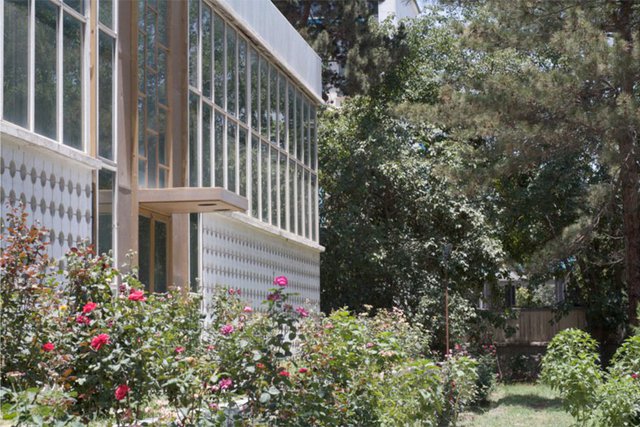
![Discarded frames from prints of the feature Gunah [https://pad.ma/BVA/player/A] and a newsreel on the 1978 coup dʼétat [https://pad.ma/BSU/player/00:06:42.480].](/custom_images/640x/usr/library/images/main/essay_006ghani2.jpg)

